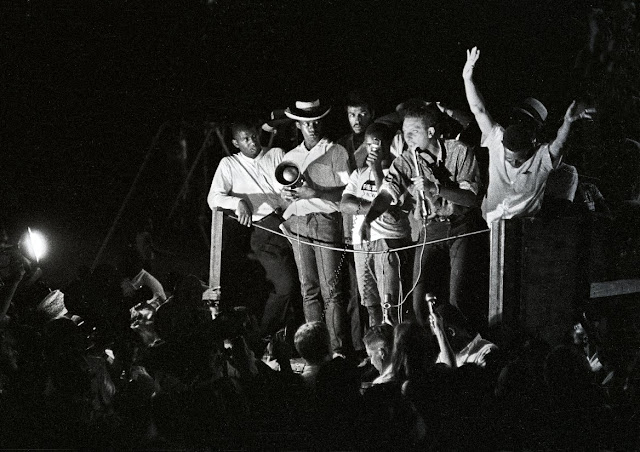The Black Panther, the first African American superhero*, appeared in Marvel Comics' "Fanastic Four" #52 in 1966. Born as T'Challa in the fictional African land of Wakanda, his father, a tribal chief, was killed by a white Dutchman intent on stealing Wakanda's natural resources. T'Challa swore to avenge his father's death and traveled to the West to study science. He returned to Wakanda to rule as the Black Panther and transformed his homeland into a prosperous nation.
-- From "Africana: the Encyclopedia of the African and African American Experience" (edited by Kwame Anthony Appiah and Henry Louis Gates Jr., 2005): @
* Note: The Black Panther is often referred to as the first black superhero, as his origins are African rather than African-American.
* Profile (Marvel Directory): @
* Profile (ComicBookDB.com): @
* Profile (Comic Vine): @
* "Everything You Need To Know About Black Panther Before Marvel's 'Civil War' " (io9.gizmodo.com, 2016): @
* Summary from "Icons of the American Comic Book: From Captain America to Wonder Woman" (2013): @
* "Marvel in the Civil Rights Era: A noble Panther, a gritty Cage" (Gary Phillips, 2012): @
* "Super Black: American Pop Culture and Black Superheroes" (Adilifu Nama, 2011): @
* Stan Lee website: @
* Profile (Comic Vine): @
* "Everything You Need To Know About Black Panther Before Marvel's 'Civil War' " (io9.gizmodo.com, 2016): @
* Summary from "Icons of the American Comic Book: From Captain America to Wonder Woman" (2013): @
* "Marvel in the Civil Rights Era: A noble Panther, a gritty Cage" (Gary Phillips, 2012): @
* "Super Black: American Pop Culture and Black Superheroes" (Adilifu Nama, 2011): @
* Stan Lee website: @

















